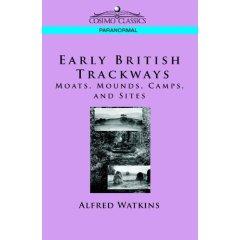| 2020ok Directory of FREE Online Books and FREE eBooks |
Free eBooks > Professional & Technical > Architecture > History > Early British Trackways, Moats, Mounds, Camps And Sites
Early British Trackways, Moats, Mounds, Camps And Sitesby Alfred Watkins  Download Book (Respecting the intellectual property of others is utmost important to us, we make every effort to make sure we only link to legitimate sites, such as those sites owned by authors and publishers. If you have any questions about these links, please contact us.) link 1 About Book Book Description These¬-if ancient-seem to be invariably on (not merely alongside) a ley, and in many cases are at the crossing of two leys, thus appropriating the sighting point to a new use. -from "Churches" Were the significant sites of ancient Britain deliberately aligned along an invisible web of power? Or is it a mere coincidence that so many locations associated with worship and arcane knowledge are situated in unique spatial relationship to one another? Self-taught photographer and anthropologist Alfred Watkins was the first to discover the "ley lines" apparently connecting the churches, megaliths, earthen mounds, holy wells, and other places of power in Britain, and he published his results in this 1922 book. Though he offers no extraordinary explanation of their meaning-except, perhaps, that the leys represent ancient trade routes-others have associated ley lines with UFOs, crop circles, dowsing, and other paranormal phenomena. Long out of print, this foundational work is a vital resource for students of the supernatural. British photographer and amateur archaeologist ALFRED WATKINS (1855-1935) was a fellow of the Royal Photographic Society and served as president of the Woolhope Naturalists' Field Club in 1919. He also wrote The Old Straight Track (1925) and The Ley Hunter's Manual (1927). From the Publisher For more Cosimo Classic titles, please visit cosimobooks.com About the Author British photographer and amateur archaeologist ALFRED WATKINS (1855-1935) was a fellow of the Royal Photographic Society and served as president of the Woolhope Naturalists' Field Club in 1919. He also wrote The Old Straight Track (1925) and The Ley Hunter's Manual (1927). Related Free eBooks | Related Tags |












SEND A COMMENT
PLEASE READ: All comments must be approved before appearing in the thread; time and space constraints prevent all comments from appearing. We will only approve comments that are directly related to the article, use appropriate language and are not attacking the comments of others.